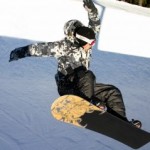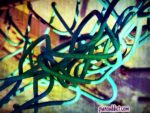PA Shorts: A Pianist, A Halfpipe, & A Snowboard
 “Amanda,” I said, “You have to spot your landings before you get there!” She looked at me for a minute and then said, “Ohhh….” We talked about the fact that when playing from memory you must know what the cadence looks like on the keyboard (geographically) as well as how it feels and sounds. You have to aim for where you are going.
“Amanda,” I said, “You have to spot your landings before you get there!” She looked at me for a minute and then said, “Ohhh….” We talked about the fact that when playing from memory you must know what the cadence looks like on the keyboard (geographically) as well as how it feels and sounds. You have to aim for where you are going.
Now, just where had that come from?
The night before, I had been watching the Women’s Snowboard Halfpipe, in awe of the fearlessness of these ladies. The commentator kept exclaiming, “Look at her spot that landing.” Of course my brain pulled this out just when I needed it. Thank you very much brain.
I found myself using the analogy often as I taught and as I practiced this week. My students are preparing for the spring round of masterclasses, evaluations, and recitals. Some don’t have a lot of experience with playing from memory. Amanda, had memorized her Chopin last semester but it wasn’t stable enough to perform from memory so she played with the score in our fall recital. She has been reviewing it to perform from memory in an upcoming masterclass. The cadences are a stumbling block for her.
Unless you have a photographic memory, part of memory work on the piano involves translating notation (a graph) into a visual picture of the keys (geography). Some people do this intuitively, others not so much. We learn to think ahead (hopefully) as good readers, but many times visualization of things as simple as the configuration of black and white keys is simply not addressed.
In fact, one school of thought is that you should never look at your hands when playing from sight. I prefer to help my students widen their vision so that they are seeing both the score and the keyboard at the same time. This is where seating position becomes so important. If you sit too close not only is arm motion restricted but so is your peripheral vision.
Our State MTA includes a theory test in yearly evaluations. Students must write cadences/progressions correctly as part of this test. I wonder what would happen if they had to draw them on a keyboard too. Perhaps that would be good exercise for my students who are having trouble spotting their landings.
Thankfully, landings are not as dangerous for pianists when we miss one—also, there is generally no snow/ice directly involved.



Why thank you. And thanks for reading!
Love this analogy between snowboarding and piano playing!